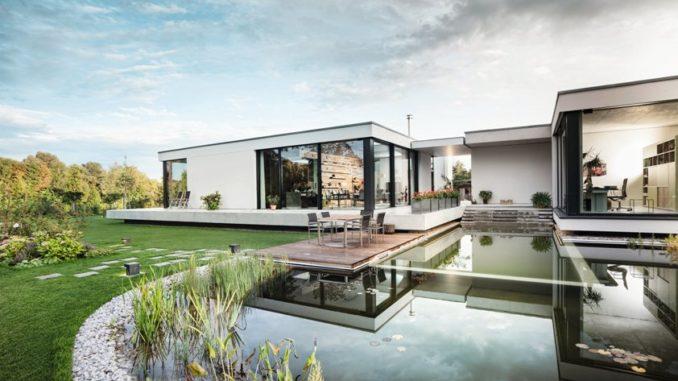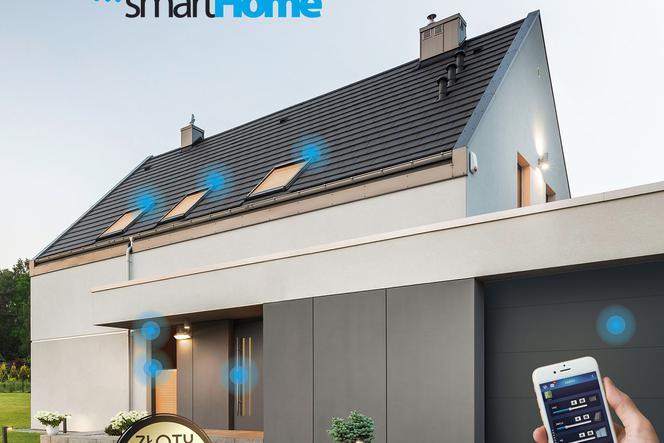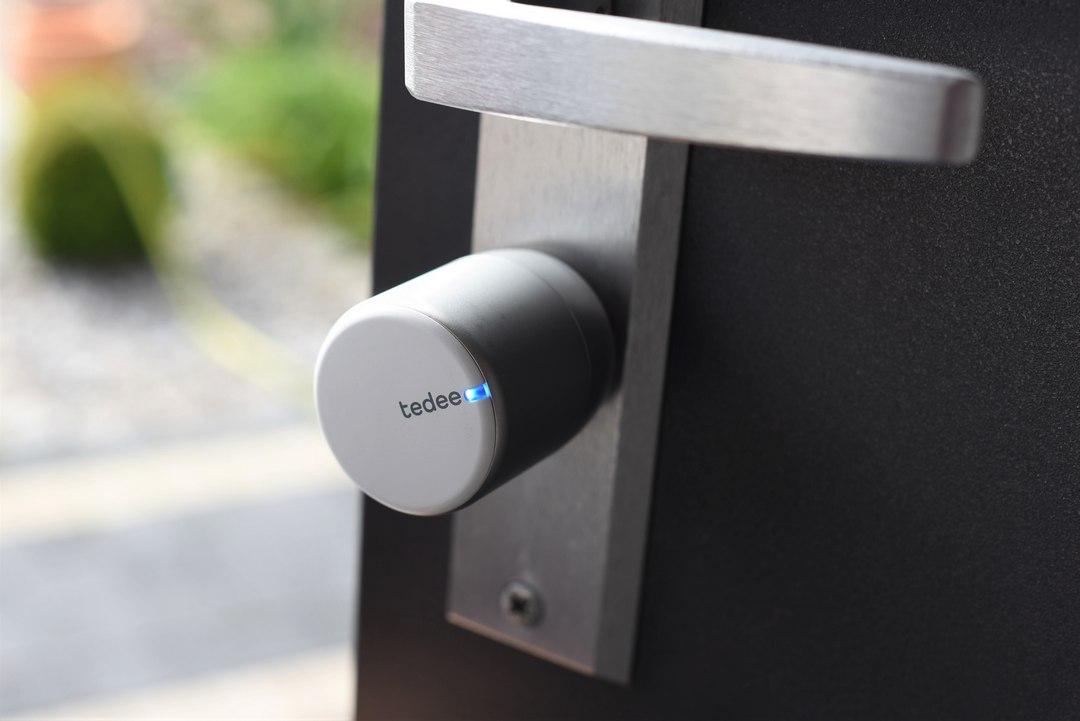Remote control of windows and doors | We are building a house
Due to technological progress and human love for comfort, more and more building elements are working automatically. The benefits of combining them into one system, known as a smart home, can only increase the interest in automation, including the one that sets the woodwork in motion. Of course, electricity replaces the strength of human muscles, first of all when manual operation of, for example, roller shutters or heavy sliding doors is cumbersome.
How to control roller shutters?
This is the category of broadly understood woodwork that "automates" the fastest. The movable element of the roller shutter is an armor made of vertical profiles, usually metal. Traditionally, it was lowered and raised by hand, using a reel with a tape or a rope, or - in the case of larger shells - with a crank mechanism. Today, roller shutters are more and more often moved by an electric motor - it is simply inconvenient to manually operate roller shutters with an armor of more than 3 m2.
The engine is placed inside the shaft on which the armor is wound. The winding shaft itself is located in the roller shutter cassette, so it is invisible. Engines can have different power, adjusted to the dimensions and weight of the armor.
They are controlled by means of wall connectors or a remote control. In the case of wired control, it is necessary to lead the electrical installation between the roller shutter motor and the switch, which can be, for example, a simple key switch. In the variant with a remote control (radio communication), you do not need to run the cable to the wall connector, but the roller shutter motor still requires power from the mains, so there is no need to connect the cables without connecting the cables.
The exceptions are some actuators that move roller shutters on roof windows. These can be powered by a solar battery, charged from solar panels placed on the cassette. In both variants (wired and wireless), it is possible to control each roller shutter separately or in groups of them, including all at the same time.
Drive for roller shutters with obstacle detection. (Photo by Becker Antriebe) Motorized roller shutters should be included in the smart home system. (photo: Aluprof)Motorized roller shutters are the part of building automation, the addition of which to the smart home system gives many benefits in various fields. We can then, for example, simulate the presence of residents. In order to confuse potential burglars, a smart house will take care of creating the impression that someone is in the building, e.g. by turning on the light or just lowering the blinds.
For the sake of convenience, lifting them in the bedroom (or in the whole house) can be synchronized with the alarm clock, and lowering with activation of the alarm. For savings and comfort, the system will lower the roller shutters on frosty nights (so that the house does not cool down) and in hot weather (so that it does not heat up excessively). As part of a smart home, they can be managed by phone or tablet, from anywhere.
Two ways to control the roller shutter on the roof window - using the wall keyboard (photo on the left) and the application on the phone (photo on the right). (photo: Velux)Can façade and roof windows be controlled?
Electrically operated vertical façade windows are not common in single-family houses, which does not mean that their producers do not consider such solutions at all. Drives that support, for example, tilting and ventilation functions have already appeared on the market, and the manufacturers of fittings have also prepared the appropriate accessories.


Automatic control works great and is more and more often used in the case of roof windows. These are sometimes installed very high (e.g. above the living room with a mezzanine, staircase) and without a ladder there is no access to them.
With the appropriate equipment, the smart home will inform the owner about the open sunroof and approaching rain. (photo: Fibaro)A remote-controlled eye window is no different than without electronics. All mechanisms (engine, controller, rain sensor) are hidden in its design. The controller allows you to connect additional equipment to the control panel, e.g. electric external roller shutters. Thanks to the rain sensor, water will not get inside - the sensor will send a signal to close the wing as soon as it starts raining. The drive rail generally allows a window to be opened by twenty to thirty some centimeters.
An air quality sensor can be included in the system - if it is dirty or too humid, the sensor will send a signal to open the window. Which will be closed when air quality returns to normal after ventilation.
The installation of an electrically operated window does not differ from the standard one, you only need to connect the power cord. They are operated with wall switches, remote controls, as well as smartphones and tablets.
Controlling roof windows with a smartphone (photo: Fakro) External roller shutter on the roof window, powered by solar batteries. (photo by Fakro)In addition to roof windows, electric drives are used in large sliding and lift-slide windows, which in practice are patio doors. The reason is not difficult access, but the considerable weight of the sash - up to 400 kg. The electric drive can be installed in windows made of any material: PVC, wood, aluminum. Many companies already offer such woodwork.
Cables and motors are usually hidden inside the profile, which means that electrically operated models have thick frames. The drive can also be hidden in a recess in the floor. The basic functions are opening, closing, slot ventilation (micro ventilation). There is no risk that the electrically operated window will pinch someone - if the sash hits an obstacle, it will stop immediately.
In a smart home equipped with a weather station, terrace windows may close automatically, e.g. due to a storm. They are controlled just like the roof ones - with a wall connector, remote control, smartphone, tablet. So on condition of access to the Internet from virtually anywhere in the world, although it is difficult to imagine what this convenience could serve in this particular case.
The drive is installed in sliding and lift-slide windows due to their considerable weight. (photo GU Polska)Electronics in the entrance door
Electronics appear in more expensive exterior doors, and are usually used not to open and close them, but to remotely control the locking of the lock.
In the case of interior doors, the electric drive is useful in the homes of the disabled and elderly, but it is used extremely rarely. For a person in a wheelchair, the possibility of opening the door, e.g. by pressing a wall switch, is undoubtedly a great help. Motorized internal doors can also open automatically when the motion detector detects that someone (e.g. a senior resident) has approached them.
Do you appreciate our advice? You can get the latest every Thursday!Coming back to the front door - on the market you can find one equipped with an actuator that will automatically open it in front of us and close it when we pass through it.
However, manufacturers usually only offer the possibility of remote control of the lock, i.e. its unlocking and locking. The door can then be opened not only with a key, but also with a smartphone, or remotely from anywhere in the world (with Internet access). The solution with an actuator requires a power supply, and the version with an electronic lock does not necessarily need to be, because it can be powered by a battery.
Opening the door with a smartphone is as follows: if they are equipped with a special electronic lock, and we have the appropriate application on the phone, when we approach them, they will simply unlock automatically. We don't even have to take the phone out of our pocket.
The same principle is used to open the garage door remotely - when the system detects the owner's smartphone in front of it, it will activate the actuator (which must be connected to the power supply) and the gate will be opened. We can also send the "electronic key" to someone, from one smartphone to another.
Thanks to geolocation, the smart house will open the gate to the property when we approach it. (photo by Wiśniowski)In the case of entrance doors, the function of remote opening from any place is also really useful. It will work when the children return from school on their own and have to be let in, or when the guests are waiting at the door and the hosts are still stuck in traffic.
It is also used to open the door with a touch code keypad and with the use of a fingerprint reader. Then you do not need the keys - to unlock the lock, just enter the code or (in the latter case) put your finger on the reader located on the door leaf or next to the door.
The front door can also be opened using a touch keyboard or a fingerprint reader. (photo: Krispol)Editor: Janusz Werner In the opening photo: The front door will unlock automatically when the system locates the owner's smartphone nearby. (photo by Schüco)








